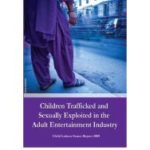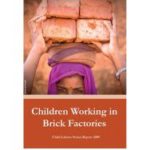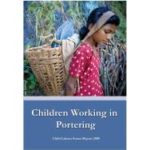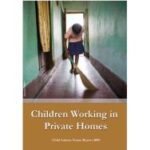
Worldwide, the use of child soldiers is seen as one of the worst forms of child labor; during the People’s War in Nepal, many children under the age of 18 became involved with different armed groups. This document highlights how World Education and its partners used community sensitization and reintegration activities to assist children who had been associated with armed forces or groups. This booklet also identifies the most successful approaches and the major challenges faced by children returning to school or those in vocational training and apprenticeships. Part of a series that comprises the final report funded by the U.S. Department of Labor.

The end of the civil war in Nepal brought an explosion of the adult entertainment sector and, as a result, an increase in the number of children being sexually exploited. This report provides background information about the child trafficking situation in Nepal and highlights ways that the program worked to withdraw girls from the adult entertainment industry and reintegrate them into schools. The booklet also identifies successful approaches for working with victims, ways to attract students into education programs, major challenges faced by victims, and complimentary services available to victims as safety resources. Part of a series that comprises the final report funded by the U.S. Department of Labor.

Rapid population growth and increased urbanization in Nepal have created a demand for brick workers. Many of these workers are migrant children whose families have moved from rural areas in search of work. This booklet presents an overview of the child labor situation in the brick industry, as well as strategies being implemented to address the situation. World Education’s work through program to address this aspect of child labor includes nonformal education, vocational education, parent teacher associations, and support to attend formal schools. Challenges and lessons learned in each of these areas are also presented. Part of a series that comprises the final report funded by the U.S. Department of Labor.

Child porters are those who carry loads for income. These children, typically the poorest of the poor, are often encouraged to miss school and carry heavy loads in order to earn extra cash to support their families. This report highlights World Education’s efforts through the program to assist children working in portering. The booklet includes context, nonformal, formal and vocational education support provided, challenges, lessons learned, and best practices/recommendations. Part of a series that comprises the final report funded by the U.S. Department of Labor.

This document focuses on the ways that World Education have assisted children working as domestic helpers in private homes in Nepal. The booklet highlights nonformal education, vocational education, and economic education programs, as well as other services such as child protection committees, community mobilization projects, and local government and private sector efforts. Additional information about successful approaches, outcomes, major challenges and lessons learned are covered by region. Part of a series that comprises the final report by the U.S. Department of Labor.
